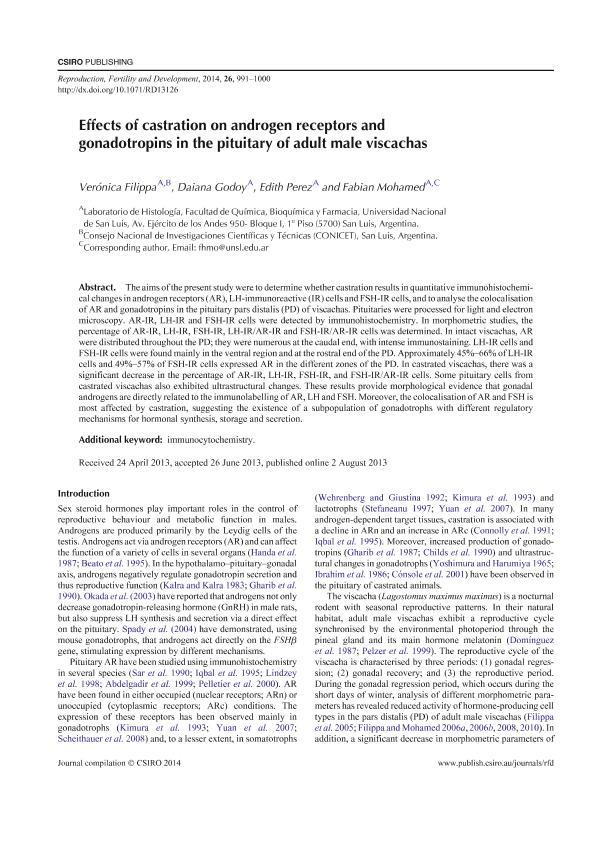Artículo
Effects of castration on androgen receptors and gonadotropins in the pituitary of adult male viscachas
Fecha de publicación:
08/2014
Editorial:
Csiro Publishing
Revista:
Reproduction Fertility And Development
ISSN:
1031-3613
Idioma:
Inglés
Tipo de recurso:
Artículo publicado
Clasificación temática:
Resumen
The aims of the present study were to determine whether castration results in quantitative immunohistochemical changes in androgen receptors (AR), LH-immunoreactive (IR) cells and FSH-IR cells, and to analyse the colocalisation of AR and gonadotropins in the pituitary pars distalis (PD) of viscachas. Pituitaries were processed for light and electron microscopy. AR-IR, LH-IR and FSH-IR cells were detected by immunohistochemistry. In morphometric studies, the percentage of AR-IR, LH-IR, FSH-IR, LH-IR/AR-IR and FSH-IR/AR-IR cells was determined. In intact viscachas, AR were distributed throughout the PD; they were numerous at the caudal end, with intense immunostaining. LH-IR cells and FSH-IR cells were found mainly in the ventral region and at the rostral end of the PD. Approximately 45%-66% of LH-IR cells and 49%-57% of FSH-IR cells expressed AR in the different zones of the PD. In castrated viscachas, there was a significant decrease in the percentage of AR-IR, LH-IR, FSH-IR, and FSH-IR/AR-IR cells. Some pituitary cells from castrated viscachas also exhibited ultrastructural changes. These results provide morphological evidence that gonadal androgens are directly related to the immunolabelling of AR, LH and FSH. Moreover, the colocalisation of AR and FSH is most affected by castration, suggesting the existence of a subpopulation of gonadotrophs with different regulatory mechanisms for hormonal synthesis, storage and secretion.
Palabras clave:
Lagostomus
,
Androgen
,
Receptor
,
Gonadotrophs
Archivos asociados
Licencia
Identificadores
Colecciones
Articulos(CCT - SAN LUIS)
Articulos de CTRO.CIENTIFICO TECNOL.CONICET - SAN LUIS
Articulos de CTRO.CIENTIFICO TECNOL.CONICET - SAN LUIS
Citación
Filippa, Veronica Palmira; Godoy, Daiana; Perez, Edith; Mohamed, Fabian; Effects of castration on androgen receptors and gonadotropins in the pituitary of adult male viscachas; Csiro Publishing; Reproduction Fertility And Development; 26; 7; 8-2014; 991-1000
Compartir
Altmétricas




